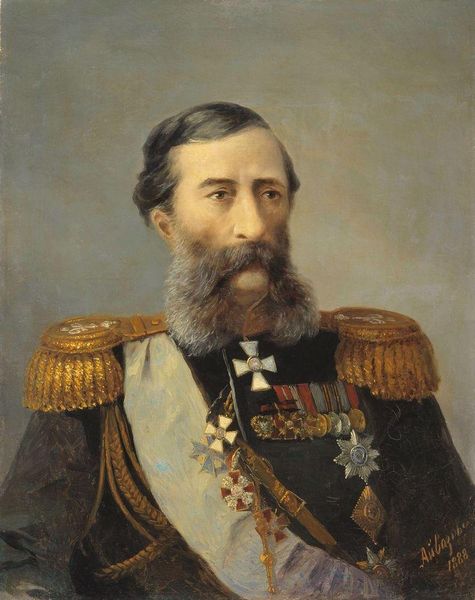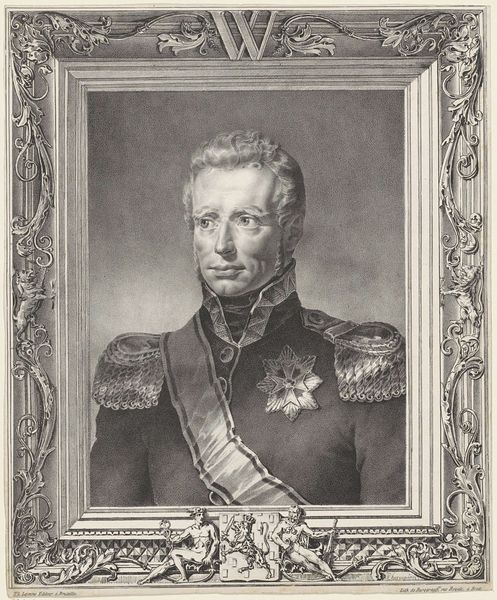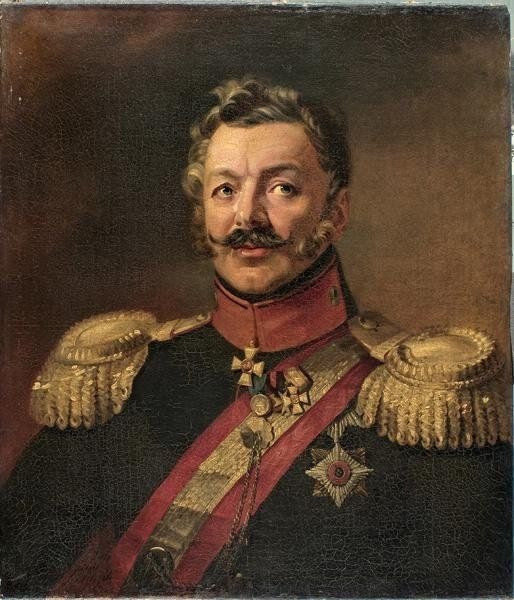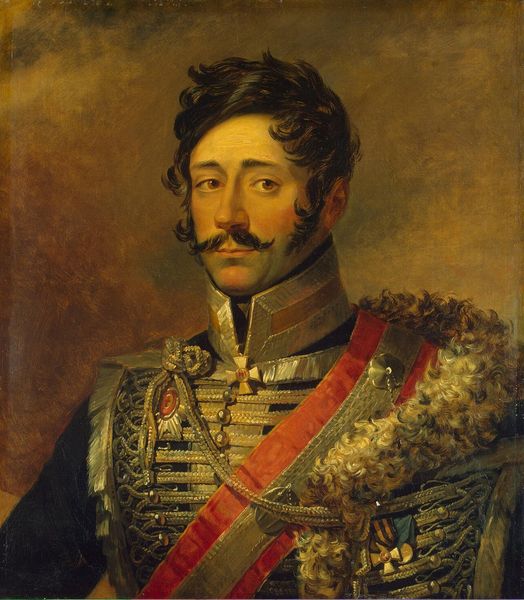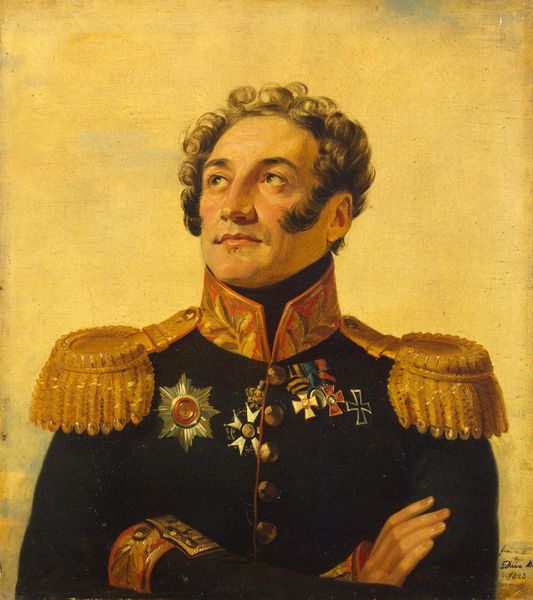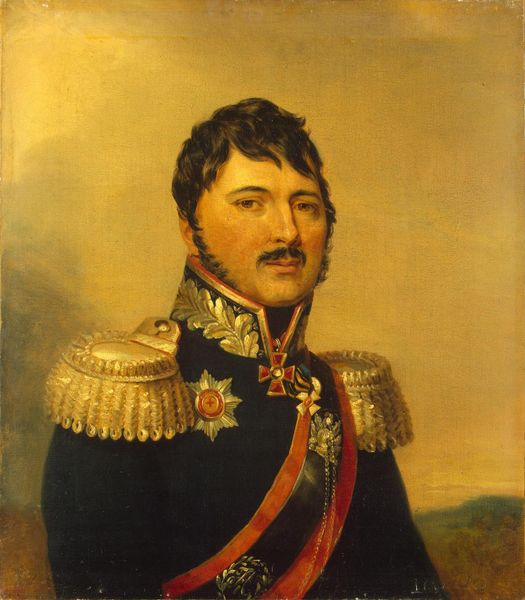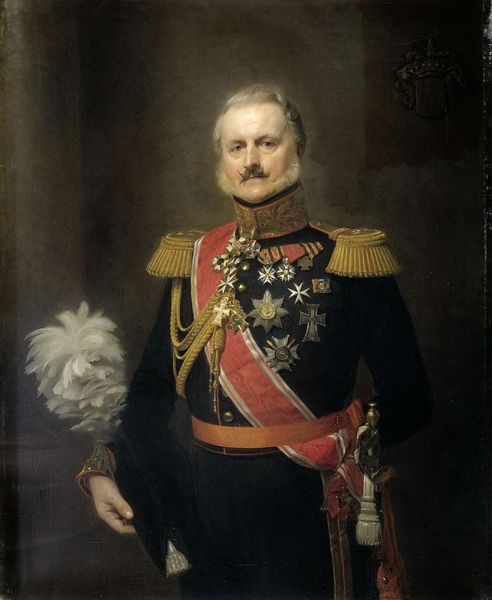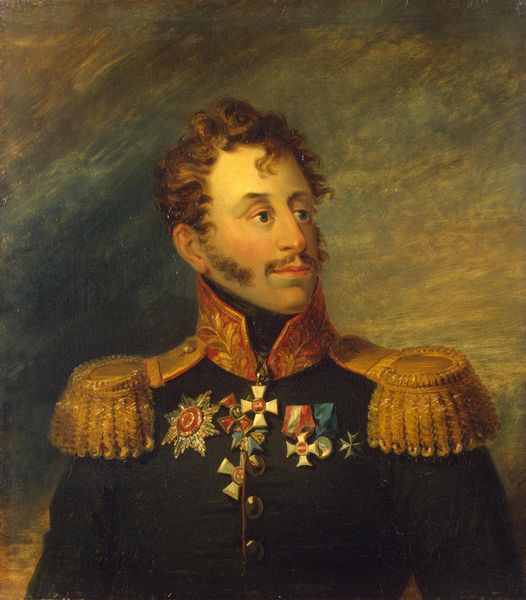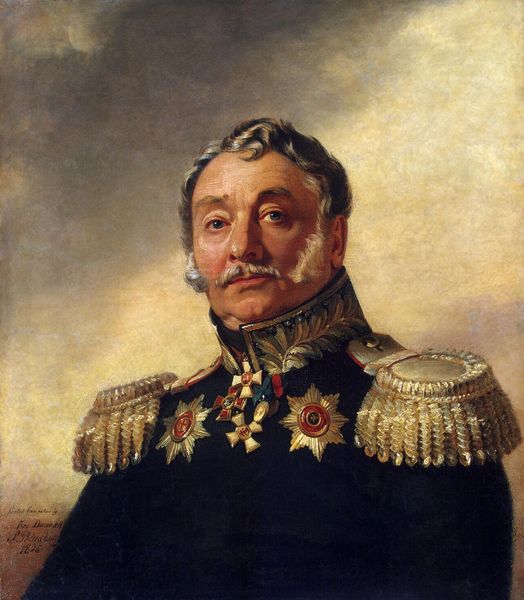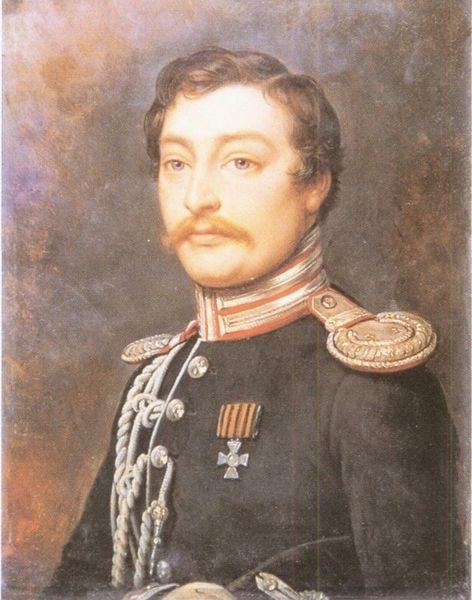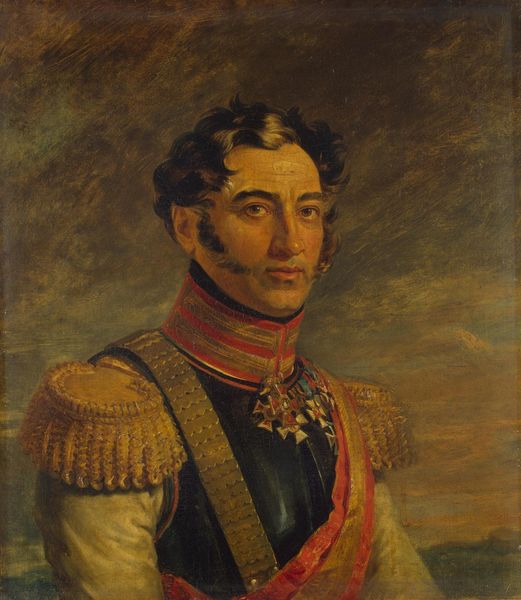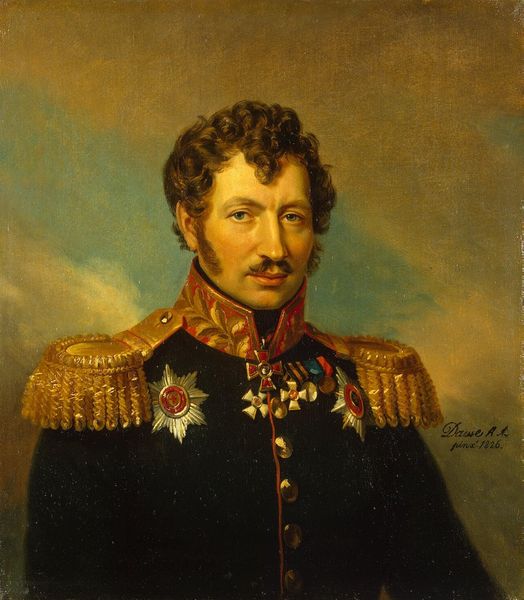
Copyright: Public domain
Curator: Looking at Charles Gleyre's 1859 oil painting, "Antoine Henri Jomini," the weight of history definitely sits heavily on the sitter's shoulders. There is something formidable and imposing about his presence. Editor: My first impression is less about presence, and more about the physical object itself: all of that gilt and ornamentation strikes me. Look at the sheer quantity of thread used on those epaulettes; and how does that textured paint interact with the slick finish beneath? One can really appreciate the degree of work put in this. Curator: It's true, the rendering is meticulous. I see a man burdened by symbolism. Those ornate details signify military authority, yet they create a visual armour, a sort of regal entrapment. His face appears weathered and thoughtful, suggesting a dissonance between personal experience and the performance of power. What would that mean for the cultural moment? Editor: Think, too, about the labor involved, from the canvas maker to the pigment grinder. Materials aren't neutral. That red sash is likely made of silk, a prized fabric then – think of trade routes, colonial economies all embedded in that little detail. And oil paint itself...such control of the surface! The painter becomes almost an industrial manager, and this "Antoine Henri Jomini" is a carefully produced object in every sense of the term. Curator: Interesting… To me, this portrait reveals an uneasy tension, with a slight vulnerability visible behind the constructed image. The cool tonality almost feels mournful and restrained—not the boisterous swagger you'd associate with Romantic heroism but something more somber. Editor: Maybe! But don’t discount the commercial pressure on the artist: He needed to communicate power, wealth and standing. Consider that alongside the hand-painted nature of it: a real luxury object and all of the power imbued within such status at this period of industrial innovation. Curator: Right, right…it makes me think about how portraiture solidifies a particular understanding of an individual for posterity, filtered through the lens of both artist and patron. In this case, Antoine Henri Jomini as a general. It freezes his identity within those constraints, which themselves shift and morph through generations… Editor: And each layer adds a dimension. Curator: Exactly. Thank you; that consideration of material context is useful in unearthing many historical threads interwoven with visual elements and emotional response. Editor: And your interpretation reveals, in turn, the symbolic power these very material objects possessed! It's the intersection, isn't it, that creates a richer understanding?
Comments
No comments
Be the first to comment and join the conversation on the ultimate creative platform.
